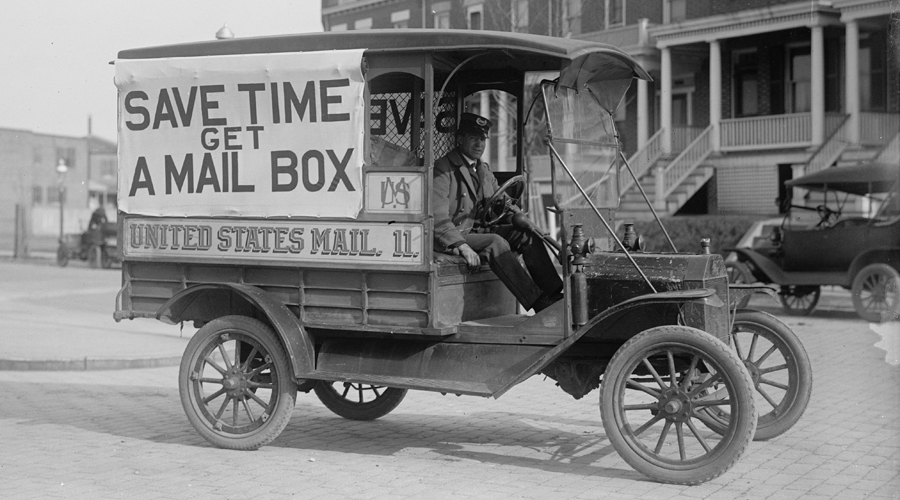The newly updated edition of Publication 100, the Postal Service’s official history book, is the go-to for readers who want to know more about the U.S. Mail. Here are seven more interesting facts from its pages:
1. One of the first African American letter carriers, William Carney, is better known for being the first African American to earn the Medal of Honor. Carney delivered mail in New Bedford, MA, from 1869-1901. The bravery displayed by Carney and the rest of the 54th Massachusetts Regiment during the Union’s assault on Fort Wagner, SC, in 1863 inspired the 1989 movie “Glory.”
2. From the 1890s through the early 1900s, mail zipped between postal facilities beneath the crowded streets of six U.S. cities. Letters were packed into canisters that were propelled by pressurized air through a system of underground pneumatic tubes. The system was last used in New York City in 1953.
3. In 1918, on the first airmail flight from Washington, DC, to New York, the pilot flew in the wrong direction. He was supposed to follow the railroad tracks northward, but ended up about 20 miles to the south. When stopping to ask a farmer for directions, he crash-landed in a freshly plowed field. The mail had to be picked up and driven by truck back to Washington, where it caught a flight north the next day.
4. City letter carriers had to knock, ring or whistle at doors until 1923. Initially, carriers hand-delivered mail to customers. By 1912, new customers were required to provide mail slots or boxes, and since 1923, all customers have been required to have a mailbox or slot to receive mail.
5. Before ZIP Codes, there were zone codes. In 1943, the Post Office Department began a zoning address system in 124 large cities, identifying delivery units or zones by one or two numbers between the city and state — for example, Birmingham 7, Alabama — so that mail could be separated by employees who did not have detailed scheme knowledge.
6. The last dogsled mail route in Alaska was converted to an airplane route in 1963. Since 1997, a hovercraft has been used to carry mail to some remote Alaskan villages.
7. Fifty years ago this August, President Richard Nixon signed into law the most comprehensive postal legislation since the founding of the republic. The Postal Reorganization Act of 1970 transformed the Post Office Department into the U.S. Postal Service, an independent establishment of the executive branch.
